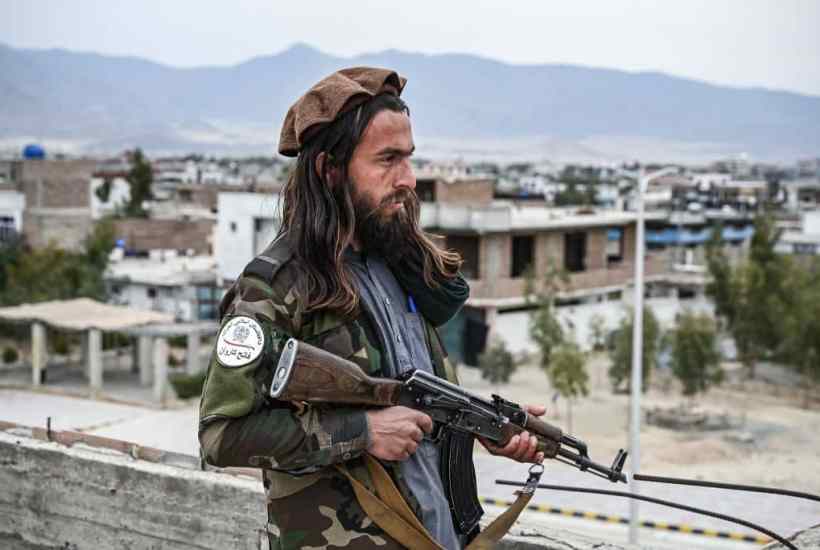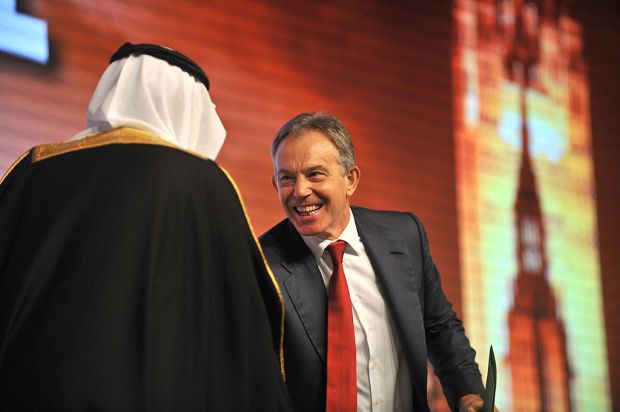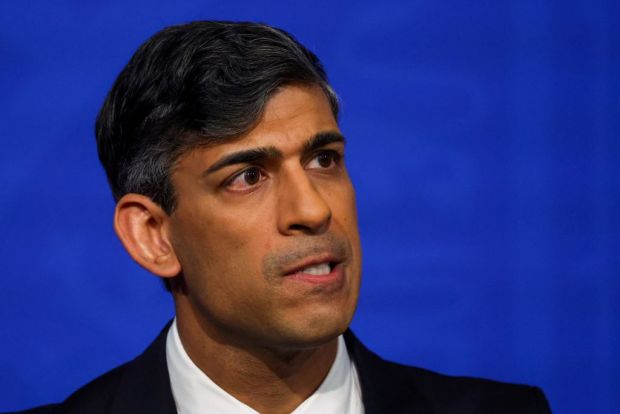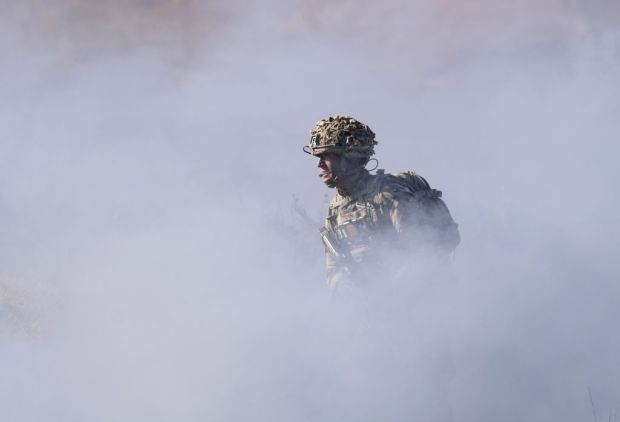The social media accounts of the new so-called ‘National Resistance Front’ (NRF) in Afghanistan give the impression of a raging insurgency already taking place against the Taliban. The talk is of ‘intense clashes’, with the Taliban suffering ‘heavy casualties.’ There are exaggerated accounts of running battles and successful ambushes against the Taliban across the north and east of the country, in particular in the Panjshir Valley, a long narrow region surrounded by mountains on all sides, not far north of Kabul. It was here that the NRF first raised its flag last summer as the country collapsed in the face of a Taliban assault.
That flag is one of the problems facing those trying to organise effective military opposition to the Taliban. It is seen as the banner of a separatist resistance group for the Tajik minority. The Panjshir Valley had a legendary reputation to uphold, as the only place that had held out against the Russians in the 1980s and then the Taliban in the late 1990s. In 2021 it fell more quickly, and those rallying to the NRF flag to continue the fight from caves and remote villages are not seen as representative across a country with dozens of tribes.
Elsewhere in the north, Yar Muhammad Dostam, the son of Abdul Rashid Dostam, one of the most ruthless and most effective commanders of the wars of the last 40 years, is now rallying disaffected Uzbeks to join him. The younger Dostam’s ‘Wolf Unit’ is loosely allied to the Tajik-dominated NRF, but while bearer of a famous name, his power to inspire and command troops will not extend beyond the Uzbeks of the north. Both of these forces attract loyalty because of bonds built in militia groups since the fight against the Soviet invasion in the 1980s.
In the shadows, and waiting for now, there are other forces with an ambition for a more organised national armed resistance, who owe allegiance, not to the civil wars of Afghanistan’s past a generation ago, but to the more recent period of reform since 9/11. They are led by former commanders in the Afghan National Army, disappointed by the lack of organisation and central control that meant their army collapsed last summer when the US pulled out the support they needed. They want another go and will rally behind the black, red and green national flag of the Afghan Republic when the time is right.
They know the Afghan people are weary of war and their time is not yet; the Taliban are being given a chance to govern. But the relative stability of the country is fragile, and ‘underpinned by combat fatigue’ in the words of the head of the UN mission Deborah Lyons. Consent to Taliban rule will change as people see the inability of the Taliban administration to respond to the collapse of the economy and widespread famine. And the Taliban’s grinding small-minded moral disapproval of so much of life, particularly for women, will harden support for the opposition.
The Taliban have tried to present a more moderate face to the world, by not insisting on strict dress codes and allowing foreign media free access. But there is mounting fear of their rule. Dozens of Afghan media organisations have closed; Afghan journalists have been beaten and imprisoned; leaders of women’s opposition groups are being taken from their homes every day. And although the Taliban have promised an amnesty for members of the former administration and its forces, the UN calculate that more than 100 have been targeted and killed. The true number is far higher.
In the face of this, even allowing considerable licence for exaggeration in the social media accounts of the NRF and other resistance bands, the Taliban are already facing armed opposition from the NRF and Dostam’s Wolf Unit and plans are being put in place for a more coordinated national uprising. What will the US, U.K, and other Nato powers, who invested so much blood and treasure in keeping the Taliban out, do then?
Plans in donor capitals in Europe and North America are for now inevitably focused on dealing with a humanitarian emergency as more than 20 million face starvation. There are imaginative schemes for refloating the Afghan economy and injecting liquidity.
The west has some bargaining power. The Taliban want recognition and international legitimacy to unfreeze more than $9 billion of government funds locked up mostly in America. Speaking on the second anniversary of the seizure of Mark Frerichs, who had been working as a contractor in Afghanistan, President Biden tied talks on legitimacy to the case. ‘The Taliban must immediately release Mark,’ he said ‘before it can expect any consideration of its aspirations for legitimacy.’
In an extensive interview with the Afghan TV channel Tolo News, the Pashto-speaking US Afghan envoy, Tom West, went further in terms of what is needed, calling for ‘genuine, inclusive, nationwide consultations’ to form a more broadly-based government.
But how much more will be asked of the US and its allies? Coming so soon after the debacle of last summer the idea of a complex intervention in the affairs of Afghanistan, including support for military action, will have little support from those nations who invested so much in the past.
Those I have spoken to who are plotting to dislodge the Taliban know that they need to look beyond the fighting phase, so they do not repeat the mistakes of the US-led intervention. They know too that the government led by Ashraf Ghani, who fled as Kabul collapsed last August, was seen as corrupt, and they need to have a plan for a different kind of government. They will need help in this. The west could soon be asked whether it will support an Afghan insurgency. And this could involve a reconstruction plan for the whole country.
Opposition forces will face enormous challenges. Unlike the Taliban, with their constant support from Pakistan across the frontier, an insurgency against them will not have such natural advantages. Of Afghanistan’s neighbours, only Tajikistan has the potential to offer support, and that is not forthcoming yet. But the opposition will have the advantage of being insurgents in a country where the geography favours guerrilla forces. American forces were given a sharp reminder of this in 2015 when they discovered a previously unknown al Qaeda training camp in the trackless deserts of the south, bordering Pakistan. It was so big that it took several days of air strikes to destroy.
The Taliban find for their part that being in government is very different from being an insurgency. As well as being confronted with a society that is alien to them because of the progress made over the last two decades, particularly in women’s rights, they are also facing opposition from the other side, as Islamic State-Khorasan, the local franchise of Daesh, recruit young fighters with the claim that the Taliban have gone soft – that the true path of jihad lies only with IS-K.
The west can continue to call for the release of those held with no cause, including Frerichs and Afghan activists, and to call for a more broadly-based government. But it needs to do more to wipe away the stain of the abandonment of the country on August 15. Pakistan should be held more accountable for insurgent groups including the Taliban who they still support. Regional powers need to be engaged in a more constructive way forward for Afghanistan, and those countries who sent their own troops to Afghanistan in the past may be called on to support Afghans who want to fight to restore the Afghan republic. They will do the fighting for themselves this time but cannot do it alone.
Got something to add? Join the discussion and comment below.
Get 10 issues for just $10
Subscribe to The Spectator Australia today for the next 10 magazine issues, plus full online access, for just $10.



















Comments
Don't miss out
Join the conversation with other Spectator Australia readers. Subscribe to leave a comment.
SUBSCRIBEAlready a subscriber? Log in